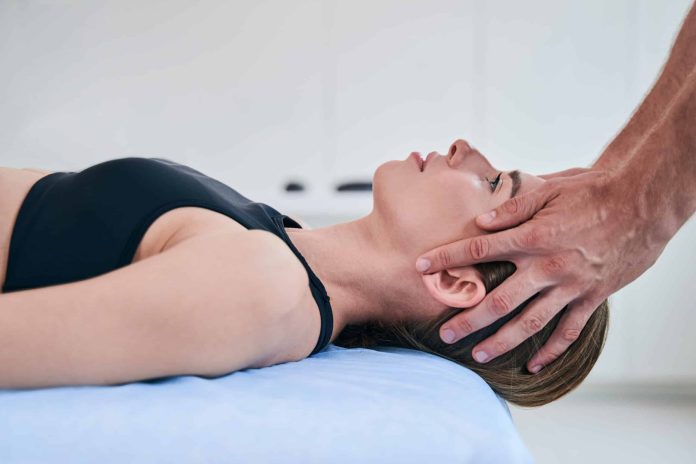
Dizziness, vertigo, and balance disorders can significantly affect daily life. Simple tasks like walking, driving, or even turning your head may suddenly feel overwhelming when the body’s balance system is not functioning properly. These issues often stem from problems within the inner ear or the nervous system, and they can impact confidence, independence, and overall well-being. Thankfully, physiotherapy provides targeted solutions through vestibular rehabilitation, helping individuals regain stability and improve quality of life.
Understanding Vestibular Physiotherapy in Singapore
For people struggling with conditions such as vertigo, dizziness, or unsteady balance, Vestibular Physiotherapy Singapore offers specialized rehabilitation programs tailored to the needs of each patient. This form of therapy focuses on retraining the brain and body to adapt to vestibular dysfunctions, enabling individuals to restore balance and reduce symptoms. It is a science-driven approach that combines exercises, movement strategies, and patient education to effectively manage balance disorders.
What is the Vestibular System?
The vestibular system is located in the inner ear and works closely with the eyes and the brain to maintain balance, spatial orientation, and coordination. When it malfunctions, symptoms can include:
- Persistent dizziness or lightheadedness
- Vertigo (a sensation of spinning or movement)
- Loss of balance or frequent falls
- Difficulty focusing, especially when moving
- Nausea linked to motion sensitivity
These symptoms can affect not only physical activity but also emotional health, leading to anxiety or social withdrawal.
Common Conditions Addressed by Vestibular Physiotherapy
Vestibular physiotherapy is effective in managing a variety of conditions, including:
- Benign Paroxysmal Positional Vertigo (BPPV): A common cause of vertigo triggered by changes in head position.
- Vestibular Neuritis or Labyrinthitis: Inflammation of the inner ear leading to sudden, intense dizziness.
- Ménière’s Disease: Characterized by episodes of vertigo, hearing loss, and ringing in the ears.
- Concussion or Head Injury: Can disrupt balance and spatial orientation.
- Age-Related Balance Decline: A natural reduction in vestibular function leading to instability.
Techniques Used in Vestibular Rehabilitation
Physiotherapists use specific strategies to retrain the balance system and reduce symptoms. Some commonly used techniques include:
- Canalith Repositioning Maneuvers: Movements designed to treat BPPV by relocating displaced crystals in the inner ear.
- Balance and Gait Training: Exercises that improve walking stability and reduce the risk of falls.
- Gaze Stabilization Exercises: Designed to enhance eye control and focus during head movements.
- Habituation Exercises: Repeated exposure to symptom-triggering movements to decrease sensitivity.
- Strength and Flexibility Training: Supporting muscles and joints to improve overall stability.
Benefits of Vestibular Physiotherapy
Engaging in vestibular rehabilitation offers multiple advantages, including:
- Reduction or elimination of dizziness and vertigo
- Improved balance and coordination
- Increased confidence in performing daily activities
- Lower risk of falls and related injuries
- Faster recovery after vestibular events or injuries
- Enhanced independence and mobility
The Role of Individualized Care
No two patients experience vestibular issues in exactly the same way. Personalized care is essential, and physiotherapists tailor rehabilitation programs based on individual symptoms, lifestyle, and health goals. Some patients may only need a few sessions with specific maneuvers, while others might require ongoing therapy with gradual progression. The adaptability of vestibular physiotherapy makes it suitable for people of all ages and conditions.
Lifestyle Adjustments That Support Recovery
Alongside clinical therapy, certain lifestyle habits can help reinforce progress:
- Proper Hydration: Dehydration can worsen dizziness.
- Good Sleep Hygiene: Adequate rest supports nervous system recovery.
- Stress Management: Anxiety can intensify vestibular symptoms.
- Safe Environment: Keeping living spaces well-lit and clutter-free reduces fall risks.
- Consistent Exercise: Walking, swimming, or yoga can complement vestibular training.
These adjustments work hand-in-hand with physiotherapy to maximize results.
The Psychological Impact of Balance Disorders
Living with chronic dizziness or vertigo often leads to emotional strain. Many people avoid social activities or physical movement out of fear of triggering symptoms, which can result in isolation. Vestibular physiotherapy helps not only with physical stability but also with restoring confidence and encouraging patients to re-engage in everyday life. Knowing there is a structured plan for recovery reduces stress and brings hope.
Why Early Intervention Matters
Seeking professional help as soon as symptoms appear is critical. Ignoring persistent dizziness or balance problems can lead to accidents, falls, and worsening conditions. Early physiotherapy intervention allows for quicker diagnosis and treatment, improving recovery rates and preventing complications.
Looking Ahead: Advances in Vestibular Care
Research in vestibular rehabilitation continues to grow, with new techniques and technologies being developed. Virtual reality exercises, wearable balance trainers, and telehealth consultations are emerging as innovative tools to enhance traditional therapy. These advancements highlight a future where vestibular care becomes more accessible and effective for patients everywhere.
Conclusion
Balance is something most people take for granted—until it’s lost. Vestibular physiotherapy provides a safe, evidence-based pathway to regain stability, reduce dizziness, and restore quality of life. By combining targeted exercises, personalized care, and supportive lifestyle changes, individuals can overcome the challenges of vestibular disorders and regain the confidence to move freely again. For those struggling with persistent dizziness or vertigo, rehabilitation offers hope, healing, and the possibility of living without fear of imbalance.


